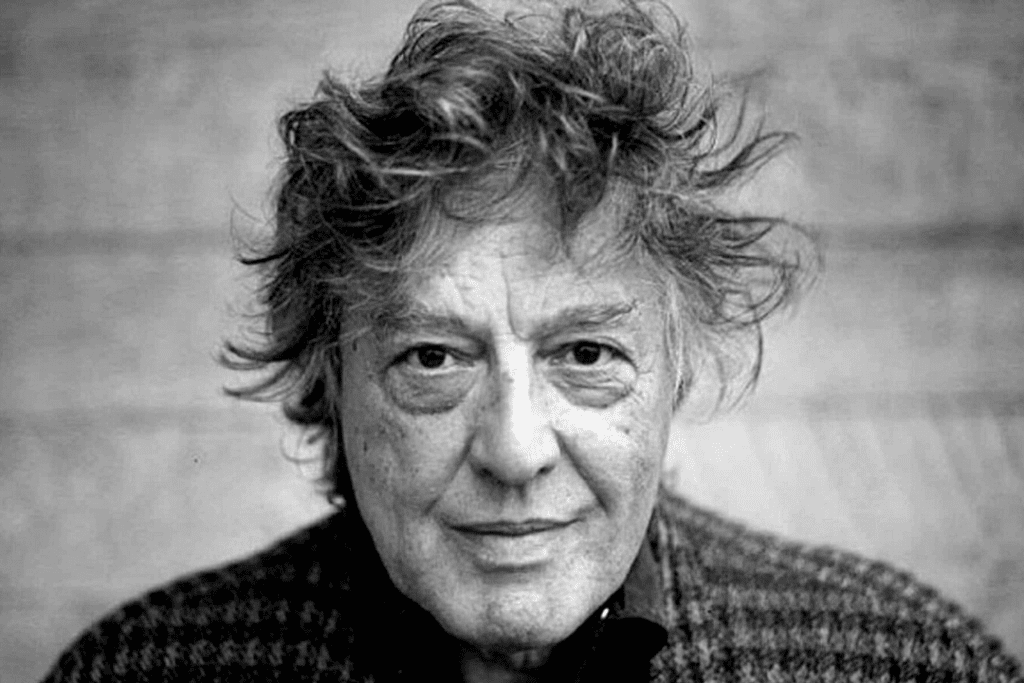Observation is a common form of qualitative research, but immersion goes a step further.
Let’s start with observation. In writing Susan Sontag: The Making of an Icon, Carl Rollyson and Lisa Paddock observed Sontag at arts events in Manhattan, where she was often a speaker. They were able to observe her and how people reacted to her. Rollyson said “Sontag was always a fascinating study, entering a room with an entourage, and then exchanging kisses, and other elaborate greetings with well-wishers. At one event in an NYU auditorium we saw a man actually genuflect and kiss her hand”.
In an interview with James Santel, Robert Caro described how he put himself in Lyndon Johnson’s shoes. In writing The Years of Lyndon Johnson, Robert Caro spoke with Estelle Harbin. Harbin worked with Lyndon Johnson, and lived in a boarding house behind the Library of Congress. Harbin said she often saw Johnson walking to work and as he approached the front of the Capitol, she saw him walk faster and faster, and then run.
Caro was curious about this and so he actually went out and walked Johnson’s path, but couldn’t work out why Johnson seemed to enjoy that path. He decided to take Johnson’s walk in the morning at 5.30 or 5 am, just as Johnson did, and Caro saw the sun lighting up the “steps and the heroic figures and the columns” and he said “Well, God. That’s sort of exciting”.
It could be argued that Boswell engaged in immersion as he researched Samuel Johnson — they did, after all, know each other for over twenty years, with Boswell spending about four hundred days with Johnson. The difference, Rollyson claims, is that although they spent much time together, Boswell didn’t live with Johnson, or see him through the entire day and night. Regardless of whether this was observation or immersion, we can agree that Boswell spent a large number of hours with his subject which proved to be valuable.
Hermoine Lee visited and stayed with British playwright Tom Stoppard, in his 1790s country house in Dorset and sat in on his rehearsals. By staying with him, Leszkiewicz noted that she had constant access to new primary sources. Lee said he often had “another pile of things waiting for me to look at — including, remarkably, all the letters that he’d written to his mother all through his life”.
Not only did Lee stay with Stoppard, but she visited his birthplace in the Czech Republic and when researching Elizabeth Bowen, she went to County Cork in Ireland, to see the field where Bowen’s Court stood before it was demolished.

Lee Gutkind, AKA the Godfather of creative nonfiction, recommends immersion as a form of research in creative nonfiction. He suggests that immersion leads to “intimate knowledge” of one’s subject, for example, you can become familiar with the subject’s environment. Gutkind said, “you hang out and wait for something to happen — and sooner or later something will happen.” He states that interviews are useful but that “watching and listening to a person you are writing about or being ensconced in a place you are profiling can be irreplaceable… Being there, you see and hear for yourself, and sometimes, you observe actions and situations that occur spontaneously — stuff you’ll never get from an interview”.
Gay Talese’s work, “Frank Sinatra has a Cold” was produced following a three month period of immersion in Frank Sinatra’s environment. Talese had sought an interview with Sinatra, but was declined due to Sinatra’s illness, so Talese made use of his access and observed and interviewed everyone he could, including Sinatra’s family, friends and associates.
In an interview with Jeffrey Williams, Lee Gutkind describes Talese’s approach. He said that Talese refers to immersion as “the art of hanging out”: when Talese wasn’t talking with someone, he was hanging out, waiting, spending time with people — because you’re “not writing about one person, you’re trying to understand and capture their world at the same time”.
In researching creative nonfiction, Lee Gutkind immersed himself in a children’s hospital and psychiatric institution and when writing Many Sleepless Nights, Gutkind immersed himself at the largest organ transplant centre in the world. In an interview with Three Quarter Review, Gutkind said, “I scrubbed with surgeons, jetted through the night on organ donor harvests, lived with transplant candidates and their families while they waited… I devoted weeks and months to spending time with, living with, patients and their families. And I knew a lot more about them than their surgeons did” and so he felt justified in offering his reflections and observations of the people.
In William’s interview, Gutkind discussed his access — he said he was able to get access to the transplant team since he had a reputation as an author and he chose a surgeon who he perceived as egocentric, someone who was being criticised but firmly believed in himself, that he was right — the surgeon said “I’m right and anyone who doesn’t believe or agree with me is wrong”.
He went on to say that he dressed to fit into the environment he was in and secured access to the surgeon through the surgeon’s assistant. In the first week, Gutkind recommends getting “yourself so embroiled in that milieu, so established there, that you become a fixture, so if you’re not there, they” ask where you are. He recommends spending time with those around your subject, not just your actual subject “don’t push your welcome too hard”.

Lee Gutkind wrote about how immersion can reveal the larger dynamics at play. When researching Friday Night Lights: A Town, a Team, and a Dream, Buzz Bissinger moved his whole family to Odessa, Texas where he spent the football season with the players, families and coaches. His children went to the local schools and his wife built friendships and shopped at the local stores.
Gutkind states that if Bissinger had “parachuted into Odessa”, he likely wouldn’t have discovered “the ugliest racism” he’d ever seen or that the town had severely misguided priorities, putting excessive resources into football instead of education. This immersion enabled Bissinger to write about things other than football, such as the relationships and racial tensions in the town and throughout Texas, topics which likely gave the series more appeal, leading to a wider audience.

In researching Lyndon Johnson’s biography, Caro camped alone in Texas Hill country and visited the Senate floor. In his interview with Santel, Caro said that when he and his wife moved out to Johnson City, everything changed. Before they moved there, his interviews didn’t progress well, but “when they realised that someone was finally coming to stay — to really try to — understand them — all of a sudden they started talking to me in a different way, giving me a different picture of Lyndon Johnson, different from any that had been in any biographies before”.
His presence in Johnson’s hometown led to fruitful field research: Ava, Johnson’s cousin, took Caro out to see where Johnson’s father had bought land that he thought was fertile, and Ava asked Caro to feel for himself, to stick his fingers into the ground. The purchase of the land and subsequent failure led to significant loss, not just financially but their reputation took a significant hit — this experience helped Caro understand how Johnson had learnt from his father’s failure and how this shaped his own life.
As Rollyson conducted research for Jill Craigie’s biography, Craigie’s husband, Michael Foote, invited Carl Rollyson to stay whenever Rollyson was in London. Foote, previously a British Labour party politician, gave Rollyson “unfettered access to Jill’s study… I could rifle through every drawer, cupboard, room, and receptacle… Each night before retiring, I would go through a shelf or a pile of books… filled with letters and reviews and notes”.
Rollyson recorded and compiled hundreds of hours of Foote “reminiscing and nearly another hundred of others commenting on him”. He spent about 100 days with Foote, “I was with Michael from breakfast to lunch to drinks and dinner and usually more talk until bedtime. I observed the cycle of Michael’s days and became a part of them, sometimes locking up the house at night, or taking messages when he was away”.
Other biographers have sought to immerse themselves in aspects of their subject’s lives, in order to fully understand and write more authentically. In writing about Theodore Roosevelt, David McCullough wanted his readers to understand taxidermy, which was part of Roosevelt’s life when he was young. McCulloch told The Paris Review, “I went out and found out how taxidermy is done. It takes patience and dexterity, and it’s smelly and grubby– a kind of work that would be very difficult for a child… There’s a paragraph or two in the book about the process of stuffing a bird, because I thought that would show a lot about the boy… He was a bright boy who did things other boys couldn’t”.
Walter Isaacson visited the Apple design studio with Jony Ive and biographer Richard Holmes said, “mere archives were not enough. He [the serious biographer] must go to all the places where the subject had ever lived or worked, or travelled or dreamed… He must step back, step down, step inside the story”.
Likewise, David McCullough said that it’s important to not just do archival research but to also look at films and photos and to go to the places where things happened, “I spend as much time there as possible, soaking up the atmosphere that shapes these people I’m trying to understand as human beings. That’s essential! To understand Harry Truman, you have to spend a lot of time in Independence, Missouri. To understand the Wright Brothers, you’ve got to spend a lot of time in Dayton, Ohio.”
Do you have an example of immersion as a form of research? I’d love to hear more!
Next: Interviewing for biography: before the interview.
Image: “United States Capitol Building Sunrise 2nd Inauguration 2013 Washington D.C.” by Anthony Quintano. Available at Flickr under Creative Commons 2.0.
Image: “Tom Stoppard” by The Huntington. Available on Flickr under Creative Commons 2.0.
Image: “Frank Sinatra” by rocor. Available at Flickr under Creative Commons 2.0.
Image: “Team Effort” by Thomas Sorenes. Available at Wikimedia under Creative Commons 2.0.

0 Comments